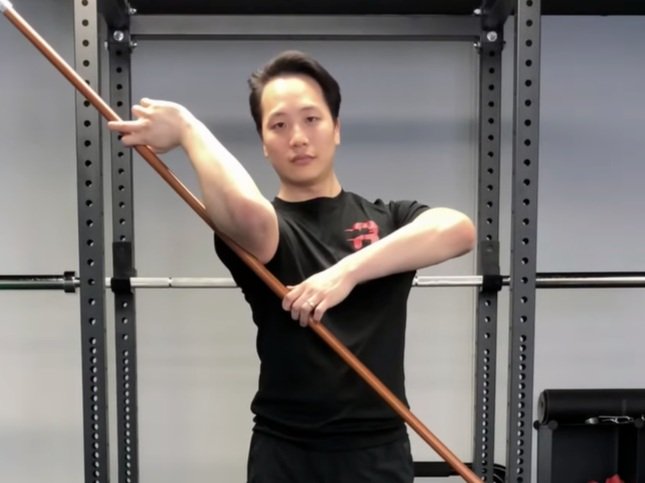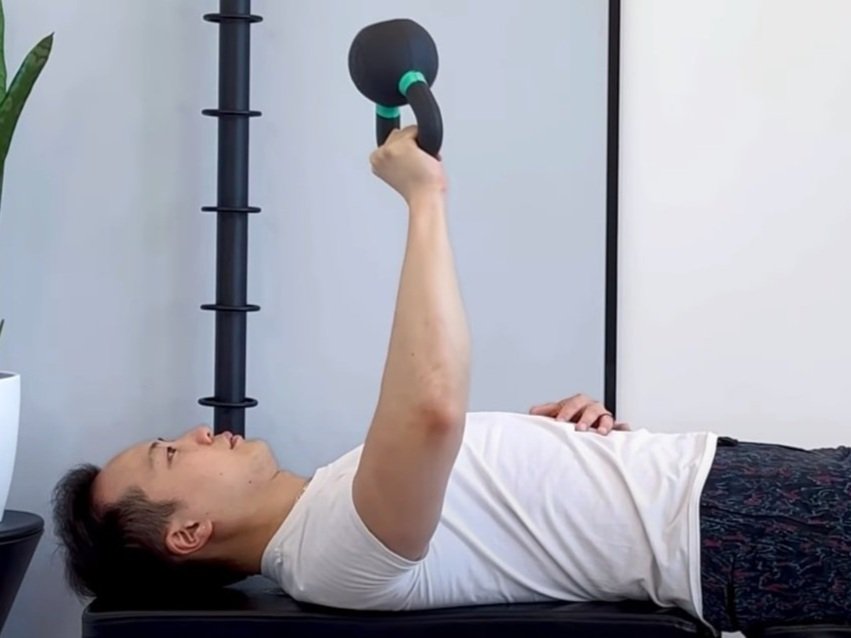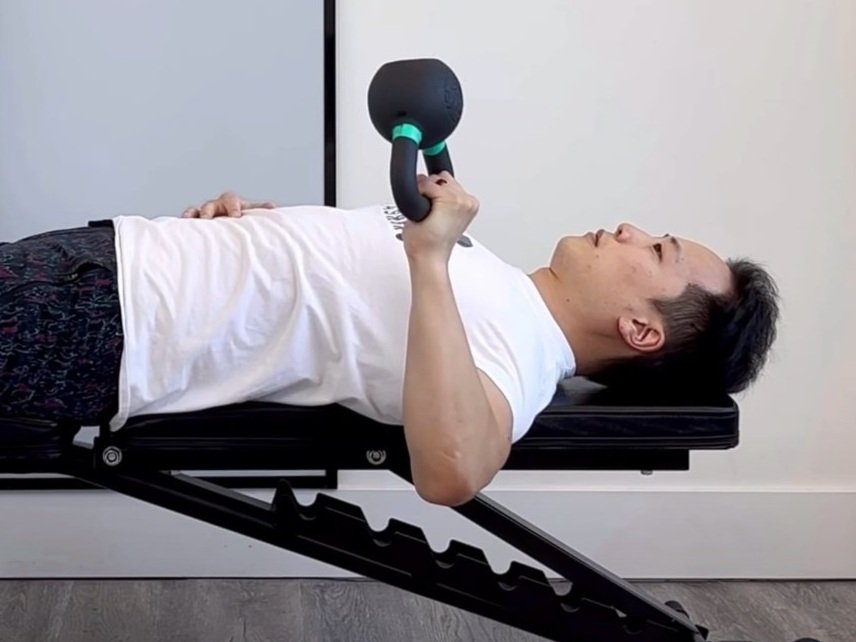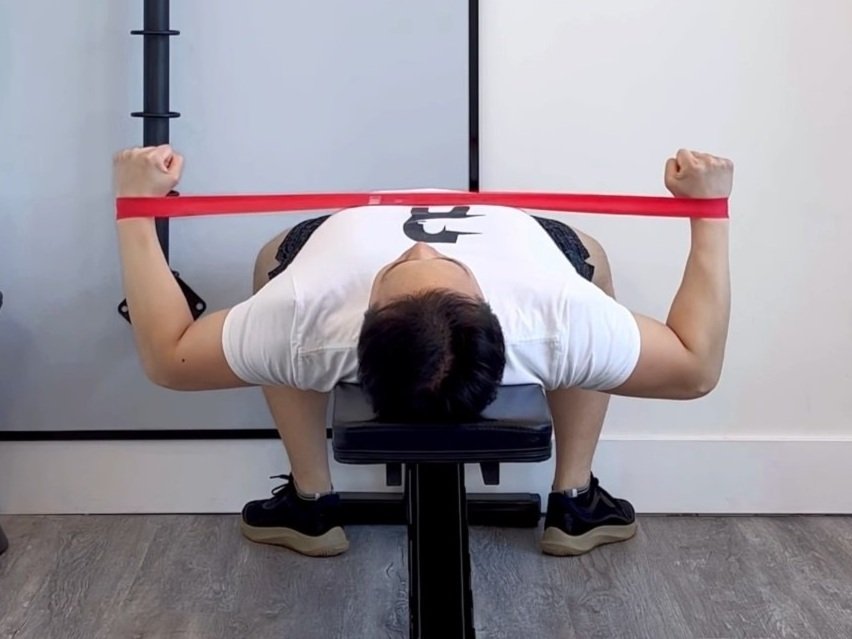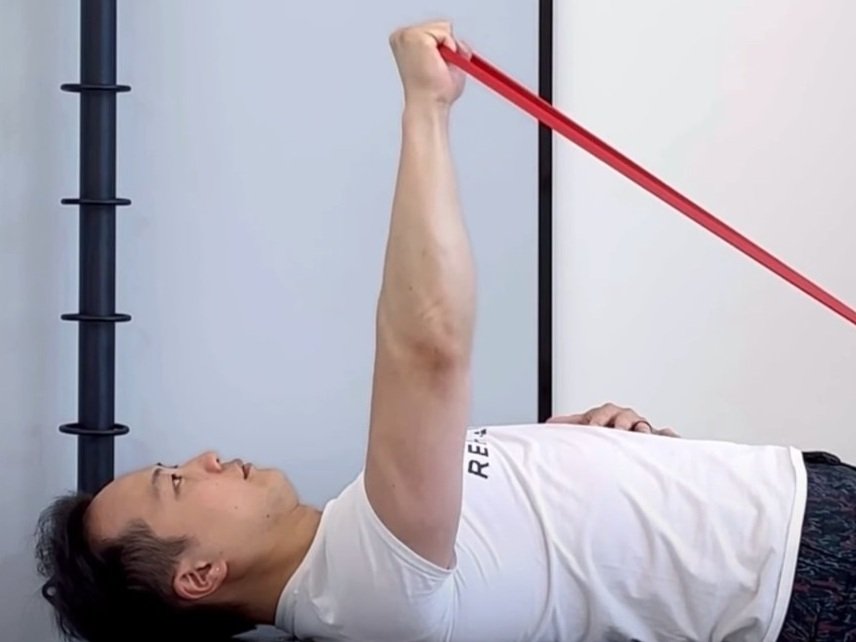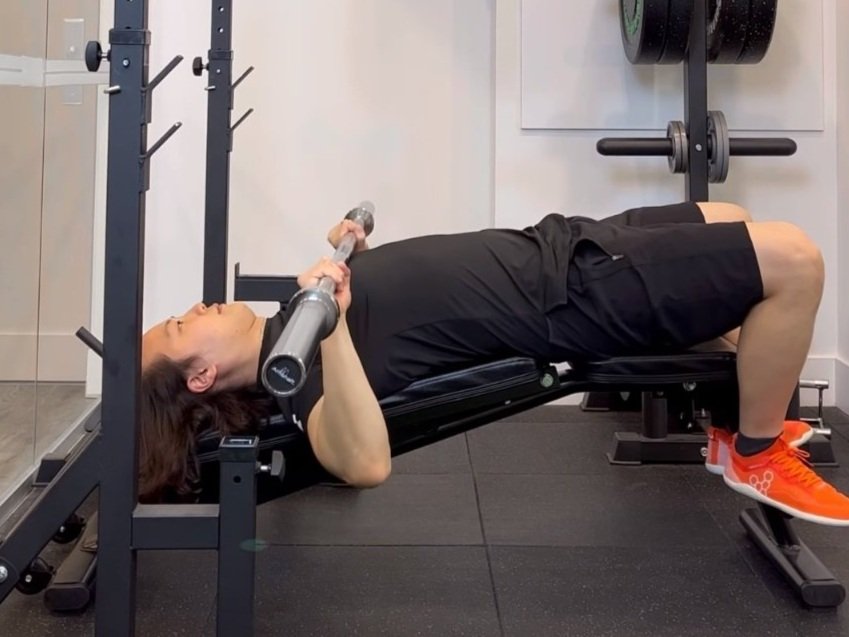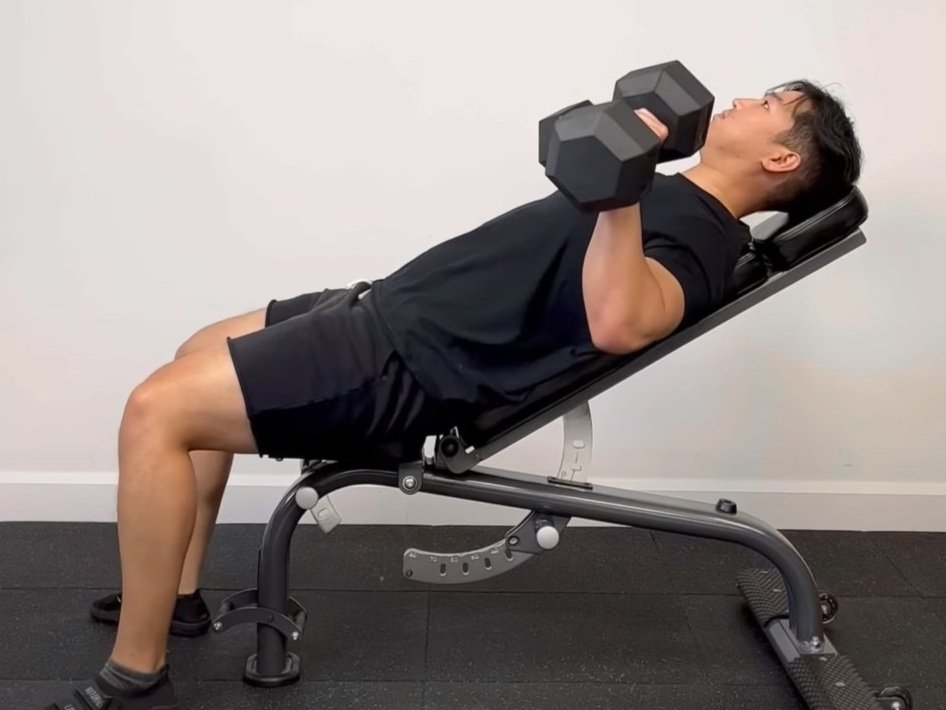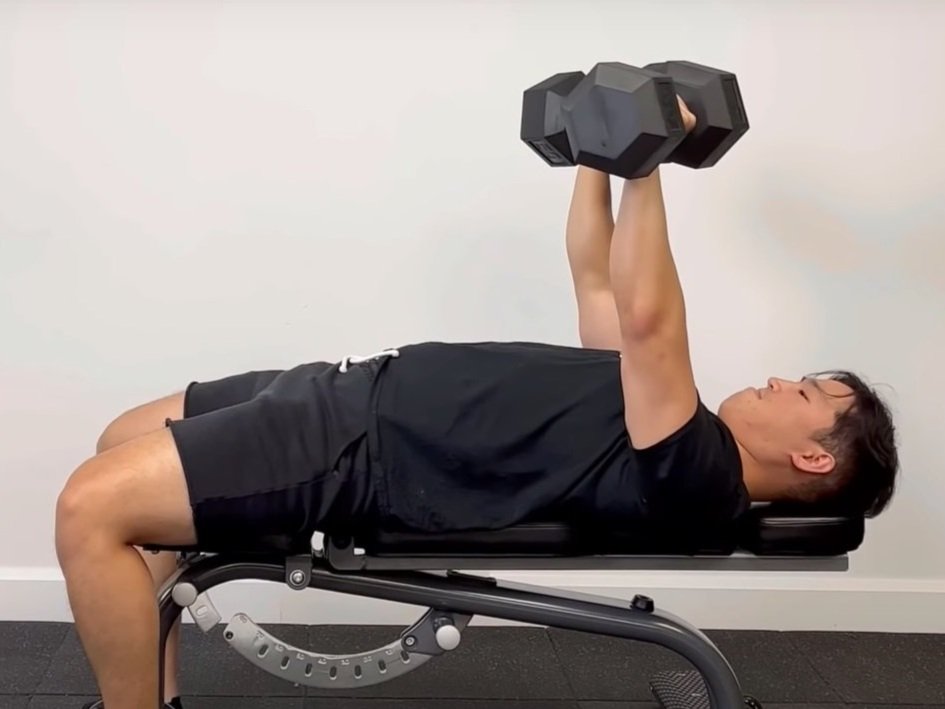Elbow Pain with Bench Press
Elbow Pain After Bench Pressing?
3 Reasons why you might be getting elbow pain from bench pressing.
Do you get elbow pain following the bench press exercise? This is a common symptom of an overuse injury that affects the tendons of your elbow. Before you start going down the reddit rabbit hole of what might going on with your injury we first want to talk a little bit about why you are experiencing inner elbow pain or outside elbow pain during or after the bench press. There are a few different conditions that can cause you pain during your bench press, but the good news is is that most conditions get better if you can improve your elbow position during this compound exercise. In today’s blog we’ll be going over the three main conditions that cause pain in the elbow and how to correct your form relating to it.
Why does my elbow hurt when I bench press?
Elbow pain from bench press is often cause by the repetitive overuse of the tendons in the elbow. Dominantly there are three main groups of muscles that can be affected during this exercise, all of which are related to your bench press form. The muscle groups are the triceps, the common wrist flexors, and the common wrist extensors. Overuse of these tendons occur due to inefficient biomechanical loading and is often experienced during periods of high volume ramping. Depending on the location of pain in your elbow a different structure may be affected. Lucky for you, your local physios and chiros over at Rehab Hero are here to break it all down for you, so keep reading!
How do I fix my elbow pain from bench press?
Fixing elbow pain during the dumbbell bench press or barbell bench press is very straight forward. It requires 2 key factors:
Form Correction
Strengthening of the injured tendons
Fixing your form is very important as it will offload the tendons involved. This will give your tendons a window of opportunity to heal which prevents delays in your recovery. Strengthening the injured tendons is also just as important. While rest alone may decrease your pain, rest also causes deconditioning of your tendons. This means when you are ready to go back to bench pressing once again the tendon will be more susceptible to experiencing pain and to reinjury since it is weaker. This holds especially true if you are expecting to lift the same amount of weight as pre-injury.
How do you fix elbow pain from lifting?
Fixing elbow pain from lifting takes proper exercise programming and form correction. This repetitive overuse injury occurs when the muscles of the elbow compensate for movement mechanics at the wrist or shoulder. In this regard, the elbow is a ‘victim’ and your lifting form and volume management are the ‘culprit’ to the injury. To reach full recovery it’ll be important to address not just the ‘victim’ but to remove the ‘culprit’. This means you’ll need to correct your form and temporarily modify your exercise volume.
How long does lifters elbow take to heal?
Generally speaking it’ll take about 2-3 months for the elbow to heal with good exercise rehabilitation. Without a proper program and without fixing your bench press form, it can take many months for this condition to recover. Since this injury is classified as a tendinosis injury, without treatments or rehabilitation it can take 6-8 months or more for it to recover on its own (this is called natural history).
Outside elbow pain during bench press
If you’re experiencing pain on the outer aspect of your elbow at what we call the lateral epicondyle, your issues may be related to the common wrist extensors. This muscle group, as the name implies, is responsible for extending the wrist. This injury can occur if you’re bench pressing with excessive shoulder internal rotation. When bench pressing with excessive internal rotation, the wrist extensors are forced to activate in order to stabilize the barbell in your hands. In this fashion the wrist extensors counter balance the internal rotation activity happening further up the kinetic chain.
Good Form
Note that the wrist is stacked right above the elbow vertically as depicted by the green line. Here gravity is in line with the forearm therefore producing minimal torque resistance within the wrist, forearm, and shoulder.
Bad Form
Note that the internal rotation of the shoulder causes the forearm to pivot away from the neutral line (green). The common wrist extensors are now forced to contract isometrically in order to maintain a neutral wrist position. This causes a biomechanical inefficiency that can overload the tendons of the wrist extensors leading to tendinosis.
In order to spare the wrist extensors from being overloaded it’ll be important to maintain neutral shoulder rotation. If going into a neutral rotation is not possible for your shoulder, you may need to improve your shoulder external rotation passive range of motion first by doing stretches. In this case, some muscles you may target with stretches include the latissimus dorsi, pectoralis major, teres major, anterior deltoid, and subscapularis. We’ll touch upon this later in this blog in the elbow pain exercises section.
Inner elbow pain during bench press
Inner elbow pain during bench press is commonly known as lifters elbow. Lifter’s elbow is the mechanical overuse of the common wrist flexors, a muscle group that attaches onto the medial epicondyle. Lifter’s elbow symptoms typically is worse at the start of your exercise and gradually gets better as it warms up. Pain may increase with an increase in weight lifted, and may linger after the workout is complete and the body is cooled down. Irritating factors may occur whenever wrist flexion is required, and in this case it can occur during excessive shoulder external rotation while bench pressing. Does this sound familiar? Yes, inner elbow pain during bench press occurs due to the exact opposite reason that outer elbow pain occurs.
Bad Form
Note that the excessive shoulder external rotation forces the forearm to move away from the neutral line (green). In this externally rotated position, the wrist flexors are forced to engage isometrically in order to stabilize the wrist. In this regard, the wrist flexors are counter balancing the shoulder external rotation.
If you find it difficult to maintain a neutral shoulder position it will be important to lower the weight and to work on increasing flexibility in your shoulder external rotators. This means you may need to stretch daily in order to get the result you are looking for. Muscles to target to improve shoulder internal rotation include the infraspinatus and teres minor muscles. Both of these muscles are classified as rotator cuff muscles.
Back of elbow pain after bench press
If you’re getting elbow pain on the back of the elbow during or after bench press it could be tendinosis of your triceps tendon. Similar to the aforementioned areas of pain, the triceps can become overloaded when compensating for mechanics happened at the arm, HOWEVER the key difference this time isn’t about shoulder rotation position but rather grip positioning. When gripping the barbell narrowly the elbows must go into deeper flexion causing more load to be placed on the triceps. Also unlike the previous two areas of pain, the triceps is a secondary mover in this exercise, in this regard it should be helping you to make your lifts. The challenge becomes whether or not your bench press is a chest dominant movement or a triceps dominant movement.
Good Form
Observe that the wrist are supposed to be stacked directly above the elbows as depicted with a green line. In this regard the forearms should resemble vertical pillars, the elbows should be supporting the wrists.
‘Bad’ Form
Notice how in this picture the elbows are in deeper flexion due to the narrower grip on the barbell. This causes the forearms to shift inwards relative to the neutral position. By forcing the elbows into deeper elbow flexion you are forcing the triceps to lift the heavy load in a greater range of motion which changes this exercise from a chest dominant movement to an elbow dominant movement.
Unlike the inner elbow pain and outer elbow pain issues, this technique is not technically ‘bad form’. It is simply a different exercise. The narrow grip bench press exercise is used by advanced weight lifters and bodybuilders alike to focus their training on developing their triceps muscles. That said, those same lifters know that this is a triceps exercise and not a chest exercise and put this notion into mind when they’re creating their workout programs. This means that they’ve calculated into their program whether or not this exercise fits in with the overall volume of their triceps training. This is why they don’t end up getting injured and maybe why you did. After all, we have a saying in physiotherapy world, “the poison is in the dosage” meaning its not the exercise that’s the problem its your programming.
Bench press elbow pain exercises
Alright now for the moment that you’ve been waiting for, exercises for elbow pain that you get from bench press. As mentioned previously, the exercise that you’d want to do will depend on which issue you are dealing with, after all the causes are different. Similar to how you wouldn’t think changing your tires is a good solution for a motor issue, you wouldn’t want to do exercises for triceps pain when its a wrist flexor issue. Lucky for you we’ve taken the liberty of breaking it down for you.
Exercises for outer elbow pain bench press:
The first thing we want to do is work on fixing your lifting mechanics, but this can be tough if your internal rotators of the shoulder are tight. Stretching out these muscles to improve your flexibility can help you get into the right position and complete the lift with good form. For this we like to do the Dowel External Rotation exercise. You will need something like a dowel, broomstick, hockey stick or golf club to help you stretch out during this exercise.
The second thing we’d want to do is to strengthen the common wrist extensors. Tendinitis of the wrist extensors is commonly known as tennis elbow. For strengthening exercise specific to this muscle group you can click here for a detailed blog on how to recover from this injury.
To see a physiotherapist or chiropractor for the treatment of tennis elbow click the button below.
Exercises for inner elbow pain bench press:
Once again the primary goal is to correct your lifting mechanics. In order to do so we’d want to stop going into excessive shoulder external rotation during the bench press. Stretching out the shoulder external rotators will help to open up your internal rotation allowing you to lift while in neutral rotation, and we have the perfect exercise to help you do so. For this we like to do the Dowel Shoulder Pull exercise. Once again you’ll need some sort of stick to help you with this exercise (a towel works too!).
Lifter’s elbow, or tendinitis of the wrist flexors, is also known as golfer’s elbow. For this a mix of exercises involving stretching, self massage, and strengthening is used to reach full recovery. To see how you can start leveling up this muscle group you can read our detailed blog post on golfer’s elbow by clicking here.
To see a physiotherapist or chiropractor for the treatment of golfer’s elbow click the button below.
Exercises for behind elbow pain bench press:
For pain behind the elbow we need to adjust your form by widening your grip on the barbell. Unlike the other conditions mentioned, this is not usually limited by mobility or flexibility issues. Instead we will want to do an exercise that will loosen up the triceps muscle so that it doesn’t experience as much tension during the lift. For this, we like to do the Triceps Active Massage exercise.
The goal of this exercise isn’t to pummel or beat up the triceps muscle, instead it is to loosen it enough so that you can handle a loaded elbow flexion position. Doing about 6 repetitions on 3-4 different spots along the triceps is more than enough to achieve this and to help you lift without pain.
The next thing we’d want to do is to strengthen the triceps muscle and tendon. We have a full detailed article that you can read here on how to recover from triceps tendinitis.
Alternatively we always recommend consulting a healthcare practitioner to get your elbow treated. To see a physiotherapist or chiropractor at Rehab Hero click the button below.
Written by: Dr. David Song
Dr. David Song is a chiropractor that is located in North York, Ontario. He focuses his attention on helping people lift weights without pain through therapy and exercise programming. Outside of the clinic you can find him working out in gyms scattered around the GTA.







